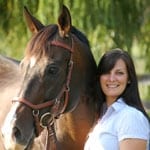Forage: Evaluating Quality and Balancing Rations
It’s rare to look at a barn’s feeding chart and see that every equine resident is consuming the same exact diet. The lean sport horse in heavy work in Stall 1 will probably need more calories than the lower-level lesson horse in good body condition in Stall 2. And the fat pony trying to escape from Stall 3 sure won’t need the same ration as the nearly toothless retiree napping in Stall 4. But one thing all these equids need in their diets is forage—the pasture and hay that should make up most of their ration.
At the 2015 American College of Veterinary Internal Medicine Forum, held in June in Indianapolis, Megan Shepherd, DVM, PhD, Dipl. ACVN, presented a review of forage quality and how to balance horses’ diets around the forage they’re receiving.
“Horses generally consume water, forage, concentrates, and supplements—and by supplements I am referring to vitamins and minerals as I will not address nutraceuticals,” said Shepherd, a clinical assistant professor of clinical nutrition at the Virginia-Maryland College of Veterinary Medicine Department of Large Animal Clinical Sciences, in Blacksburg, Virginia. “Water is always the most important ingredient in a horse’s ration. Forage is the next most important, to which everything else in the ration should be based.”
It all boils down to evolution. Shepherd explained that horses evolved consuming forage—a good source of both energy and carbohydrates (especially fiber, she said)—and still thrive on forage-based diets because of how their digestive tracts function. Of specific importance are horses’ hindgut (cecum and colon) microbes
Create a free account with TheHorse.com to view this content.
TheHorse.com is home to thousands of free articles about horse health care. In order to access some of our exclusive free content, you must be signed into TheHorse.com.
Start your free account today!
Already have an account?
and continue reading.

Written by:
Erica Larson
Related Articles
Stay on top of the most recent Horse Health news with















